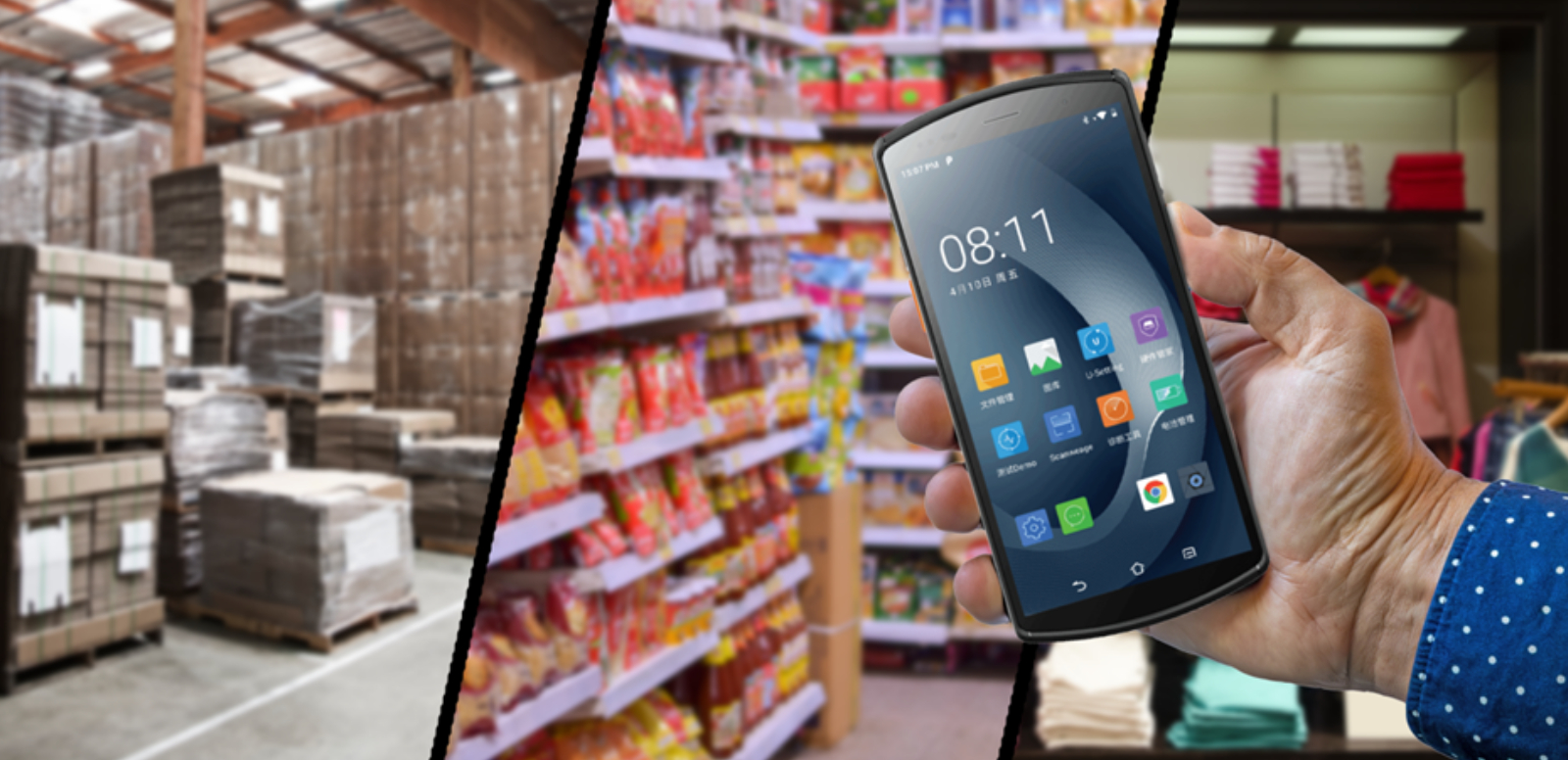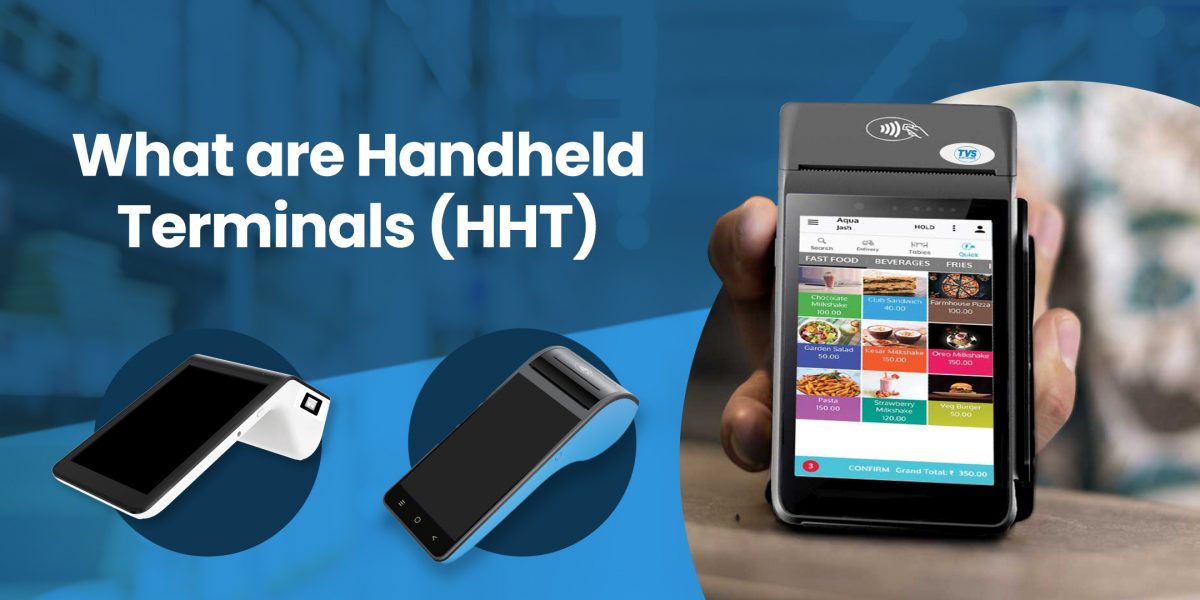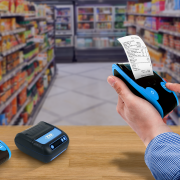Handheld terminals (HHT) are devices that significantly contribute to improving efficiency and mobility in logistics, retail, healthcare, and other field services. They are transforming the way businesses operate across various industries. The question arises of what these handheld terminals are, and how they revolutionize business processes?

We will explore the world of HHTs, their features, applications, benefits, and future trends.
Understanding what are Handheld Terminals (HHT)
Handheld Terminals are portable, wireless terminal devices designed to facilitate data collection, processing, and communication in real-time. These devices are equipped with features such as barcode scanners, RFID readers, touchscreens, and wireless connectivity options like Wi-Fi and Bluetooth. In appearance, HHTs are like smartphones that are used universally, but they have some functionality differences. They are essentially mobile computers that allow users to perform a variety of tasks on the go, making them indispensable in environments where mobility and instant data access are crucial.
Key features of HHT:
1. Portability: HHTs are designed to be lightweight and easy to handle, ensuring that users can carry them comfortably for extended periods. Their ergonomic design enhances user experience by minimizing fatigue and increasing productivity.

2. Wireless connectivity: HHTs facilitate real-time data transmission and communication by supporting multiple connectivity options such as Wi-Fi, Bluetooth, and cellular connectivity. This ensures that data can be shared instantly with central systems, enabling seamless operations.
3. Durability: HHTs are built to endure harsh conditions, which is not the case for consumer-grade devices. They have high resistance to dust and water and can survive drops from significant heights.

4. Energy Saving: HHTs are built with long-lasting batteries that ensure they can be used for extended periods without the need for frequent charging and can support full shifts of continuous use.
5. Data collection: HHTs often come equipped with various data capture technologies, such as barcode scanners, RFID readers, and cameras. These features allow for quick and accurate data collection, which is crucial for inventory management, asset tracking, and order fulfilment.
6. Customizability and integration: HHTs can be customized with various software applications tailored to specific business needs. They also integrate seamlessly with multiple enterprise systems.
Applications of HHT:
1. Retail: In retail, HHTs are used for inventory management by allowing employees to scan barcodes to check stock levels, update prices, and restock products. They also help with customer service by assisting customers with product information and enabling mobile checkout.
2. Warehouse and Logistics: Warehouses and logistics companies rely on HHTs for tracking shipments, managing inventory, and optimizing warehouse operations. These devices streamline the process of locating and handling goods, reducing errors, and enhancing productivity.
3. Field Services: Field service technicians use HHTs to access job details, update work orders, capture signatures, and communicate with the central office. This reduces paperwork, increases efficiency, and updates information in real-time.
4. Healthcare: In the healthcare sector, HHTs can be used for various purposes, like patient identification, medication administration, and inventory management of medical supplies. They improve accuracy in patient care, reduce errors, and ensure compliance with healthcare regulations.
Benefits of HHT:
1. Improved mobility: HHTs allow employees to perform tasks anywhere from the storefront to the warehouse to the field. This helps in reducing labor costs, and streamlining operations, contributing to a more efficient and cost-effective workflow.
2. Increased efficiency: HHTs automate the data collection and entry processes, reducing the time and effort required to perform these manual tasks. This leads to higher productivity and better resource utilization.
3. Enhanced accuracy: The use of inbuilt barcode scanners and RFID readers ensures precise data capture, minimizing errors associated with manual data entry. This is particularly important in inventory management and healthcare, where accuracy is critical.
4. Real-time data access: HHTs enable real-time communication and data sharing, which help with instant updates and decision-making. This is crucial in dynamic environments like logistics and field services, where timely information can impact overall efficiency.
The future of HHTs looks promising with advancements in technology. Integration with the Internet of Things (IoT), Augmented Reality (AR), and Artificial Intelligence (AI) can enhance the capabilities of HHTs. Additionally, the evolution of 5G networks will provide faster and more reliable connectivity, improving real-time communication and data processing.
Handheld Terminals (HHTs) have revolutionized various industries by enhancing efficiency, accuracy, and real-time data access. As technology evolves, HHTs will undoubtedly play a crucial role in driving further innovation and productivity across different sectors. At TVS Electronics, businesses can choose from a wide range of handheld terminals (HHT) to meet all their requirements.














